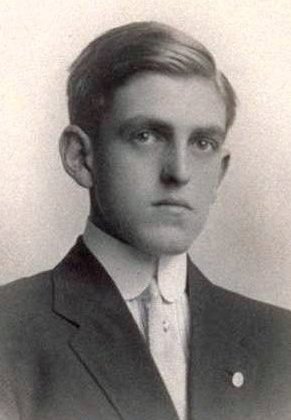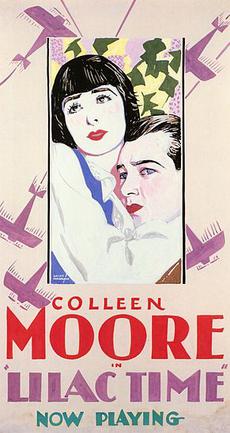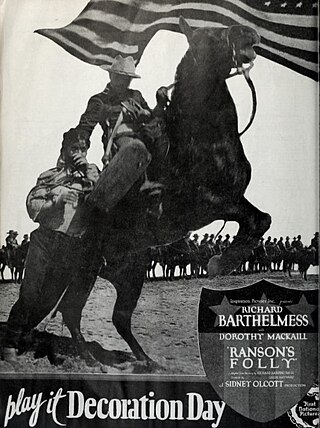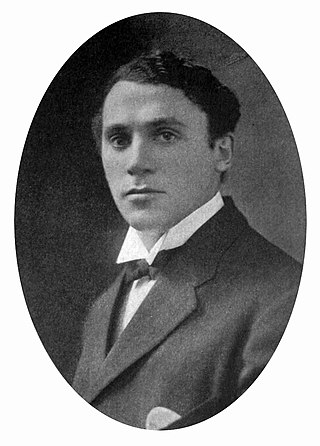
Samuel Goldwyn, also known as Samuel Goldfish, was a Polish-born American film producer. He was best known for being the founding contributor and executive of several motion picture studios in Hollywood. He was awarded the 1973 Golden Globe Cecil B. DeMille Award, the Irving G. Thalberg Memorial Award (1947) and the Jean Hersholt Humanitarian Award (1958).

Sidney Coe Howard was an American playwright, dramatist and screenwriter. He received the Pulitzer Prize for Drama in 1925 and a posthumous Academy Award in 1940 for the screenplay for Gone with the Wind.

Charles Albert Murray, was an American film actor of the silent era.

Mary Carr, was an American film actress and was married to the actor William Carr. She appeared in more than 140 films from 1915 to 1956. She was given some of filmdoms plum mother roles in silent pictures, especially Fox's 1920 Over the Hill to the Poorhouse, which was a great success. She was interred in Calvary Cemetery. Carr bore a strong resemblance to Lucy Beaumont, another famous character actress of the time who specialized in mother roles. As older actresses such as Mary Maurice and Anna Townsend passed on, Carr, still in her forties, seem to inherit all the matriarchal roles in silent films.

George Frederick Walsh was an American actor. An all-around athlete, who became an actor and later returned to sport, he enjoyed 40 years of fame and was a performer with dual appeal, with women loving his sexy charm and men appreciating his manly bravura.

De Sacia Mooers was a film actress, disputably from Los Angeles, California. She appeared in over one hundred movies in the silent film era. She was perhaps best known as the "Blonde Vamp" for her role in The Blonde Vampire in 1922. Her career ended with talking films.

Lilac Time is a 1928 American synchronized sound romantic war film directed by George Fitzmaurice and starring Colleen Moore and Gary Cooper. While the film has no audible dialog, it was released with a synchronized musical score with sound effects using the sound-on-disc Vitaphone process. The film is about young American aviators fighting for Britain during World War I who are billeted in a field next to a farmhouse in France. The daughter who lives on the farm meets one of the new aviators who is attracted to her. As the flyers head off on a mission, the young aviator promises to return to her.
John G. Montijo (1891–1929) was an American aircraft engineer and instructor.

In Hollywood with Potash and Perlmutter is a 1924 American silent comedy film, produced by Samuel Goldwyn, released through Associated First National Pictures, and directed by Alfred E. Green.

Potash and Perlmutter is a 1923 American silent comedy film directed by Clarence G. Badger. The film is based on an ethnic Jewish comedy with characters created by Montague Glass and Charles Klein for a 1913 Broadway play of the same name which ran for 441 performances. The play is based on the 1909 book of the same name by Montague Glass. This film is notable as the first release of Samuel Goldwyn's independent production company.
The California Coupe, also called the Royer & Montijo California Coupe, was an early cabin biplane built in California. It was built in part using parts from a crashed Dayton-Wright OW.1, the last aircraft designed by one of the Wright Brothers. The California Coupe flew in early 1924, but the next year it was damaged in a failed stunt on a movie set. Montijo and Royer were not recompensed, so the company folded and the designed was not developed further.

Ranson's Folly is a 1926 American silent Western film produced by and starring Richard Barthelmess and co-starring Dorothy Mackaill. It is based on a Richard Harding Davis novel and 1904 play, Ranson's Folly, and was filmed previously in 1910 and in 1915 by Edison.

Jules Eckert Goodman was an American playwright and author. He was best known for his plays The Man Who Came Back (1916), The Silent Voice (1914), Chains (1923), and a series of plays featuring Potash and Permutter written with Montague Glass.

Montague Marsden Glass was a British-American Jewish lawyer and writer of short stories, plays and film scripts. His greatest success came with the creation of his fictional duo Abe Potash and Morris ("Mawrus") Perlmutter, who appeared in three books, a play, and several films.

A Man's Man is a lost 1929 synchronized sound film produced and distributed by Metro-Goldwyn-Mayer and directed by James Cruze. While the film has no audible dialog, it was released with a synchronized musical score with sound effects using both the sound-on-disc and sound-on-film process. The film starred William Haines and Josephine Dunn. It was based on a Broadway play, A Man's Man by Patrick Kearney. Greta Garbo and John Gilbert notably appear in a cameo. The film is believed to be lost, although the Vitaphone type sound discs exist and are currently held at the UCLA Film and Television Archive.

Potash and Perlmutter is a three-act play written by Montague Glass and Charles Klein, based on earlier short stories written by Glass. Producer Albert H. Woods staged it on Broadway, where it opened at the George M. Cohan Theatre on August 16, 1913. The play is a comedy featuring the characters Abe Potash and Mawruss Perlmutter, who are business partners in the garment industry.

Alexander Carr (1878–1946) was a Russian born stage and screen actor, writer, vaudevillian, burlesque and circus performer.

Barney Bernard was an American stage and screen actor. Bernard always looked older than he was which allowed him to play aging ethnic Jewish characters. He established an onstage partnership with Alexander Carr and the two starred in the successful play Potash and Perlmutter beginning in 1913. Prior to the 'Potash' success, Bernard was in the first Ziegfeld Follie revue, Ziegfeld Follies of 1908 and had also appeared in a few stage musicals with Al Jolson, La Belle Paree (1911) with Kitty Gordon, Vera Violetta (1911) with Gaby Deslys, The Whirl of Society (1912) with Jose Collins.
Sidney Franklin (1870–1931) was an American stage and film actor. He appeared in around thirty films during the silent and early sound eras. His final screen performance was in Puttin' On the Ritz in 1930. On stage he portrayed Solomon Levy in the original production of Abie's Irish Rose.

George Sidney was a Hungarian-born American film actor and comedian. He starred in The Cohens and Kellys film series.

















